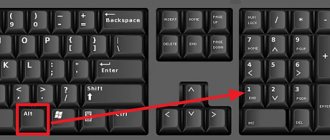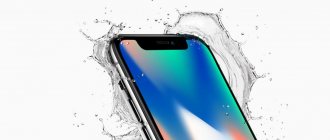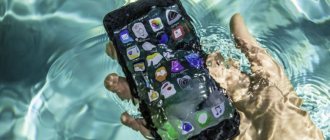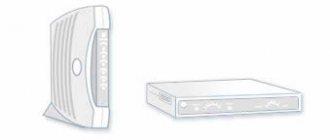Protecting smartphones from various types of damage is a priority. We can increase the level of protection for our equipment with select accessories such as tempered glass or rugged housing. It's worth taking a closer look at the labels that accurately define level of protection of our equipment.
A special IP code tells you that your smartphone is protected from:
- access to dangerous parts
- water penetration
- penetration of foreign bodies
It's worth knowing! Smartphones that meet certain safety standards against various types of damage are increasingly being chosen by consumers. In addition to standard and commonly found devices, customers can choose equipment made from extremely durable materials. Water resistance and dust resistance are just some of the advantages of such equipment.
IP67 vs IP68: What IP Ratings Mean
First, there is a difference between waterproof and water-resistant. Waterproof means that no matter how long an item is immersed in liquid, water will not penetrate it. Water-resistant means that an item can allow water to enter it to some extent, but not completely. When we talk about smartphones and smartwatches, we almost always talk about their water resistance. They cannot survive in water indefinitely.
IP is the name of a standard developed by the International Electrotechnical Commission (IEC) to determine how resistant an electrical device is to fresh water and common raw materials such as dirt, dust and sand.
The first number after the IP is the rating that the IEC has assigned to the unit for its resistance to solids. In this case, there are six of them, which means that no "harmful" dust or dirt has seeped into the device after direct contact with the substance for eight hours.
| Solid Defense | |
| IP code | protection |
| 1 | Protection against contact with any large surface of the body, such as the back of the hand, but not protection against intentional contact with any part of the body |
| 2 | Protection against fingers or similar objects |
| 3 | Protection from tools, thick wires or similar objects |
| 4 | Protected against most wires, screws or similar objects |
| 5 | Partial protection against contact with harmful dust |
| 6 | Protection from contact with harmful dust |
Next we have the water resistance rating.
Currently, there are two leading ratings - seven and eight, the first of which means that the device can be immersed in water up to a depth of one meter for half an hour, and the second for half an hour up to 1.5 meters.
| Moisture protection | |
| IP code | protection |
| 1 | Protection against vertically dripping water |
| 2 | Protection against vertically dripping water when the device is tilted at an angle of up to 15 degrees |
| 3 | Protection against direct splashing water when tilting the device at an angle of up to 60 degrees |
| 4 | Protected against splashing water in all directions. |
| 5 | Protects against low pressure water ingress from 6.3mm nozzle in any direction |
| 6 | Protects against water ingress into powerful jets from 12.5mm nozzles in any direction |
| 7 | Protected against immersion in water up to 1 meter (or 3.3 feet) deep for up to 30 minutes |
| 8 | Protected from immersion in water to a depth of more than 1 meter (the manufacturer must indicate the exact depth) |
And this is how IP ratings are formed.
As a reminder, IP67 means the device can be submerged in water up to a meter deep for half an hour, while IP68 guarantees protection in water up to 1.5 meters deep for the same period of time. Both are dust resistant.
Difference between IP67 and IP68
Today, more and more premium smartphones are rated IP67 or IP68. For example, the Apple iPhone 8 and 8 Plus are IP67 rated, while the Samsung Galaxy S20/S20 Plus, as well as the iPhone 11 Pro and Pro Max are IP68 rated. What is the difference between the two standards?
As mentioned above, the number “6” means absolute protection against dust. This means that all six gadgets in question (Apple iPhone 8/8 Plus, iPhone 11 Pro/Pro Max, Samsung Galaxy S20/S20 Plus) are completely dustproof.
The second number (7/8) indicates water resistance. Thus, a device with an IP67 rating can withstand immersion in water of 1 meter for 30 minutes. In this case, the water can only be fresh. A device with an IP68 rating can survive immersion in water to a depth of two meters for 30 minutes without consequences.
It is worth noting that each manufacturer gives its own recommendations for the use of devices with an IP68 rating. Thus, Samsung indicates that the Galaxy S20 and S20 Plus can withstand immersion in water of 1.5 meters for 30 minutes. In turn, Apple claims that the iPhone 11 Pro and Pro Max, with the same IP68 protection rating, can withstand immersion for the same time, but to two meters.
When talking about IP67 and IP68 waterproof ratings, it's important to note that we're actually talking about water resistance, not waterproofing. And even at shallow depths, water can exert pressure on the housing above the permissible limit, and water will enter the device. It's also worth noting that smartphone manufacturers' warranties do not cover water damage.
IP67 vs IP68: what about other liquids?
Let's be clear: the International Electrotechnical Commission rating is strictly for fresh water. This means that it is not guaranteed to be immersed in other liquids - beer, coffee, salt water, soda water, and many others.
So if you spill a liter of your favorite beer on an IP67 or IP68 handset and quickly shake it off, you should be fine, although it will smell beer and be sticky. But if you leave it in this liquid for a long time, it can break... forever.
Exceptions and features
Often the second number is related to the first: if the device body is closed from water jets (4-5), it automatically becomes protected from contact with foreign objects (5). But there are exceptions - for example, waterproof cases for gadgets have an IP38 standard.
Waterproof rating is not cumulative beyond level 6: the housing can withstand liquid immersion (7) but be vulnerable to splashing water under pressure. The protection class for such devices is indicated twice: IP65/IP68 - complete dust protection, resistance to water jets (not under pressure) and operation in a liquid environment - the shell may not withstand powerful jets.
It is strictly not recommended to deliberately check compliance with the stated standards on an expensive gadget. In case of problems with warranty service, it will most likely be refused.
IP67 vs IP68: can you swim with a smartphone?
It is not recommended to swim with phones. The IEC tests the smartphone in laboratory conditions, with the phone in standby mode, rather than in a pool filled with various chemicals used to purify water.
The same applies to the sea/ocean. Sea water is full of salt, manufacturers do not test how well a device can withstand immersion in such liquids and it does not pass the IP rating test, so we also strongly recommend avoiding immersing your phone in such liquids.
The smartphone maker once released promotional photos showing an IP68-certified phone being used for underwater photography. The Company later changed its mind and warned customers that they should not use the device this way.
Useful articles: The best smartphone is HERE!!!
The device should not be used underwater. Your device's IP rating was achieved in laboratory conditions in standby mode!”
An ad featuring a phone in a swimming pool was actually banned by advertising agencies for containing false information.
Additional marks
It is also worth knowing the meaning of additional letters, which can also be found in the case of some entries.
Additional letters:
- A – protection against access to dangerous parts with the back of the hand
- B – protection against access to dangerous parts with a finger
- C – protection against access to dangerous parts with tools
- D – protection against access to hazardous parts by wire
- H – high voltage device
- M – protection against the harmful effects of water penetration when the moving parts of the device are in motion
- S – protection against the harmful effects of water penetration when the moving parts of the device are stationary
- W – Suitable for use in certain weather conditions, provided additional protection is provided
Attention! The German standard DIN 40050-9 is also known, which uses additional designations. IPX4K defines protection against high pressure water splashes. IPX6K – provides protection against high pressure water jets, especially for vehicles. IPX9K speaks of protection against high water pressure during blasting/steam cleaning, especially for vehicles.
IP67 vs IP68: What else you need to know
It's always worth checking the documentation on the manufacturer's website to see what exceptions, if any, they have to the ratings they provide. Apple, for example, has several strict caveats regarding the water resistance of the Apple Watch, with different versions having different ratings.
On its website the manufacturer writes:
Is Apple Watch waterproof? They are water resistant but not waterproof. For example, you can use them while exercising (sweating), in the rain, or while washing your hands.
Can I swim or shower with Apple Watch? They are resistant to splashes of water, but immersing them in water for a long time is not recommended. They are suitable for swimming in the pool, but not for scuba diving, water skiing, or other extreme sports that involve high water speeds or diving to great depths.
While you can shower with Apple Watch, we don't recommend exposing it to soaps, shampoos, conditioners, lotions, or perfumes as these products can adversely affect water seals and acoustic membranes. The watch should be rinsed with fresh water and dried with a lint-free cloth.
Water resistance is not permanent and may decrease over time, both in watches and phones!
What is IP
IP – abbreviation and decoding for “International Protection Marking”, which roughly translates as “international security assessment”. This is a method of classifying the protection of the contents of a device by its shell and case from the penetration of moisture and small particles (various types of dust, including wood, plastic, metal, sand) from the environment.
Until recently, the most secure device was a device marked IP68 - a completely dust- and moisture-proof shell that can withstand prolonged immersion in water to a depth of several meters. Now a more aggressive standard has appeared - IP69-K. The housing not only does not allow dust to pass through, but will also withstand prolonged immersion in hot water under pressure.
Smartphones with protection from dust and water
The Sony company has long been famous for its security standards, although not in all gadgets. But the new flagship Sony Xperia XZ received such protection, and according to the IP68 standard. The Apple iPhone 7 also received protection, albeit according to the IP67 standard. This is where competition with Samsung took its toll; the company probably decided to follow suit and also release a secure product. Well, Samsung has already surpassed Apple anyway, because now it has released three protected mid-segment phones Samsung Galaxy A3 (2017), as well as Galaxy A5 (2017) and Galaxy A7 (2017), thereby occupying a niche more accessible to users.
Decoding indexes
The letter index indicates that the device body has received protection against water and dust in accordance with the established IEC-952 standard. Now about the numbers.
The first digit is the dust protection class:
- protection against penetration of “dust particles” with diameters of more than 50 mm;
- the same, but 12mm;
- 2.5mm;
- 1mm;
- there is protection from dust, but not complete, dust cannot affect the operation of the product;
- complete protection from dust.
The second digital index is protection from water:
- drops falling vertically onto the shell should not cause harm;
- drops will not cause harm if hit at a 15° angle;
- the product will not be damaged by rain at a 60° angle;
- splashes of water can hit from any angle, and there will be no harm;
- protection not only from splashes, but also from jets of water;
- protection from strong jets or short-term exposure to water;
- the body can withstand short-term immersion to a shallow depth, but operation in water is not provided;
- long-term immersion to a depth of more than a meter, complete isolation, work under water.
Degrees of IP protection › Table
It is convenient when the degrees of protection of electrical equipment ip are summarized in tables. Below are three tables for IP decryption protection. They comply with GOST 14254 – 2015.
Table of degrees of IP protection from access to dangerous parts, indicated by the first digit of the index
IP protection table from external solid objects (first digit)
Table of the degree of protection of electrical equipment IP from water (second digit)
In addition to the first two digits, the protection degree marking may contain two letters. The one that comes first after two numbers is called additional, and there may also be a letter with auxiliary information. The additional letter indicates the level of human protection from access to dangerous parts.
When a person touches electrical equipment, the following types of protection are distinguished:
- “A” – with the back of the hand;
- “B” – fingers;
- “C” – hand tool;
- “D” – single conductors.
The first number after IP and the additional letter in the marking have different meanings. The number indicates the protection of the housing from the negative influence of a person or any objects, and the additional letter indicates the protection of a person from the negative influence of elements of the electrical equipment itself.
For example, the first number “3” indicates the protection of the housing from hand-held tools, that is, the equipment will not be damaged when exposed to hand-held tools. The additional letter “C” certifies that personnel will be protected from the influence of unfavorable factors, namely electric shock, if the shell is exposed to hand tools.
The second letter of the protection category marking after the numbers displays auxiliary information.
- “H” – high voltage equipment,
- “M” – the test was carried out while moving,
- “S” – the test was carried out in a stationary (motionless) state.
"M" and "S" are usually used for equipment with moving parts.
Samples of protection degree markings with additional and/or auxiliary letters – IP 20С, IP 67S, IP 55DS.
Additionally, instead of numbers, there are “X” symbols. This symbol means that protection from foreign objects or water is not standardized for these components of the electrical product. Marking examples – IP X5, IP 1X, IP XX.
In addition, the product may be marked with not one, but several degrees of protection. Multiple degrees of protection are noted if it is necessary to indicate protection simultaneously from several negative influences, and the latter correspond to different degrees when classifying protections. For example, the product is protected from the effects of low water flow and short-term immersion in liquid. Under such conditions, the following marking can be given - IP 65 / IP 67.
What do IP67 or IP68 standards mean?
This mark indicates the degree of protection of the shell. Each mark symbol has its own meaning:
- IP is an abbreviation for the Ingress Protection classification;
- the first digit is the class of protection against penetration of solid objects;
- the second digit is the class of protection against liquid penetration.
International Protection Marking (or Ingress Protection Rating) is an international standard for classifying devices according to the level of protection of its parts from the penetration of solid objects and water.
If a device has a zero degree of dust and moisture protection, manufacturers do not even indicate this in the specifications. If the device is not equipped with a moisture and dust protection system, it is classified as IPX0 or IP0X, respectively. For example, if the device is protected only from dust, the manufacturer indicates this in the specifications in the format IP10, IP20 or IP30, etc. The same applies to devices protected only from moisture: IP01, IP02, IP03, etc.
Most often, these standards are used not only in the classification of smartphones, but also smart watches. This is due to the operating features of these devices - they are most susceptible to water and dust. Some manufacturers also classify headphones and portable speaker systems according to this standard.
Protect devices from dust and moisture. Understanding the designations of the IP standard
We have been dealing with a wide variety of devices for many years. During this time, thousands and thousands of gadgets have passed through our hands, and our customers have asked us a great many questions about them.
Among all these questions, there are those that are constantly repeated. More often than others, questions arise about the dust and water protection of gadgets. And we know why. The fact is that almost all manufacturers indicate that their devices comply with the IP standard. Also, companies that develop gadgets like to write that their device can withstand pressure of 3-5 atmospheres or even more. Buyers of such gadgets, trying to be guided by logic, believe that if 5 atmospheres are indicated, then the device can be submerged to a depth of 50 meters. And if so, you can definitely swim in it, and even more so, you can take a shower. But logic doesn't always work where marketers operate. Let's try to figure out what all this means.
IPXX - what does it mean?
So, the IP standard is an international standard that classifies the degree of protection of devices from the penetration of solid particles of the smallest fraction (in fact, dust) and water. By the way, the degree of protection provided by shells (IP code) is determined according to GOST 14254-96. The standard was developed based on the 1989 IEC 60529 standard and came into force on January 1, 1997. The International Protection Rating introduces the designation IPXX, where “XX” is replaced by numbers. As an example, the two most common standards for consumer devices are IP67 and IP68.
Here the first digit indicates the degree of protection against foreign solids (dust, metal, human fingers, etc.). The minimum protection is 0 (the device is only suitable when used in a housing), the maximum is 6 (complete protection from dust).
The second number shows the degree of protection against moisture penetration. The minimum protection is 0 (any moisture can damage the device), the maximum is 8 (the device is not afraid of water, it can be immersed to a depth of more than 1 meter).
Water resistance tests are carried out in such boxes.
After the numbers, there may sometimes be letters that provide additional information about the degree of protection of the device from external factors. But this type of designation is rare for consumer devices, so we won’t consider it now. According to Wikipedia, the maximum degree of protection according to the IP standard is IP69-K. This is how the housings of devices that can withstand high-temperature, high-pressure washing are marked. In this case, we even had to introduce additional markings (let me remind you that the generally accepted designation for maximum protection against water is 8, not 9).
| Level | Defence from | Description |
| 0 | — | No protection |
| 1 | Vertical drops | Vertically dripping water should not interfere with the operation of the device |
| 2 | Vertical drops at an angle of up to 15° | Vertically dripping water should not disrupt the operation of the device if it is tilted from its operating position by an angle of up to 15° |
| 3 | Falling splashes | Rain protection. Sprays fall vertically or at an angle of up to 60° to the vertical. |
| 4 | Spray | Protection against splashes falling in any direction. |
| 5 | Jets | Protection against water jets from any direction |
| 6 | Sea waves | Protection from sea waves or strong water jets. Water that gets inside the housing should not interfere with the operation of the device. |
| 7 | Short-term immersion to a depth of 1 m | During short-term immersion, water does not enter in quantities that disrupt the operation of the device. Continuous operation in immersed mode is not expected. |
| 8 | Immersion to a depth of more than 1 m for more than 30 minutes. | The device can operate in submerged mode |
Sometimes, instead of one of the numbers in the designation of the degree of protection of a particular gadget, you can see an X. For example, IPX7. In this case, the designation says that the device has not been tested for protection against dust, but it is not afraid of water.
Meters and atmospheres - where is the dog buried?
Manufacturers of electronic devices also work with the IP standard, but more often an alternative rating indicating atmospheres is used. Garmin, Pebble, Polar and other electronic device manufacturers often test their devices themselves to determine how well they are protected from exposure to water.
| Pressure/depth | Protection |
| 3 atm (30 m) | The device is not afraid of splashes of water, but you cannot take a shower in it, you cannot bathe, swim, and especially dive. It is better to keep the gadget away from water |
| 5 atm (50 m) | The device is well protected from water, you can leave it in the pool, go fishing, swim and perform some water work that does not require immersion |
| 10 atm (100 m) | Can be used for almost any water work, swimming and immersing under water for some time. Diving enthusiasts can work with such devices without any problems |
| 20 atm (200 m) | You can dive to relatively great depths, that is, for example, scuba diving, use the device when working in sea water |
Inexperienced users, seeing the designation 30-50 m, immediately decide that with such a gadget they can dive, swim, or even keep the device in an aquarium. In fact, as we see, a device with a rating of 3 ATM or 30 meters is afraid of water, and very much so.
It’s also interesting that manufacturers understand labeling in their own way. For example, the same Fitbit Surge carries a mark of 5 ATM. In a good way, this means that you don’t have to take it off while swimming. But manufacturers say you shouldn't swim in this gadget, as the Surge may not withstand impacts during a swim. What's the matter? And the fact is that the water resistance of devices is tested in stagnant fresh water (in most cases). While swimming, the pressure can change abruptly, and the water will still find a loophole, ruining the gadget.
Diving enthusiasts sometimes put their devices at great risk.
But with Pebble Time the situation is different. The developers everywhere indicate the degree of protection as “30 m”, but the description of the device says that you can swim with it in the pool. But this does not mean at all that, having put on this watch, you can dive into the sea with it. Sea water is not at all like fresh water; it contains much more salts, and this can lead to damage to the device. As mentioned above, most devices are tested in fresh water, not salt water.
It's worth knowing
- Most water resistance tests are carried out in fresh water. If the manufacturer did not indicate that the gadget is not afraid of salt water, then it means that testing in the sea or ocean was not carried out;
- Tests are carried out at positive temperatures, usually 15-35 degrees Celsius. If a watch that is not afraid of water at normal temperature goes into a sauna or bathhouse, it may become damaged;
- The leather strap is not waterproof;
- If the device is not afraid of water, when immersing it in water, check that all the holes of the gadget that should be closed are closed;
- A gadget with minimal protection from water will not necessarily break if you shower or swim in it. But there is no guarantee that if you took a shower twice and everything was fine, then nothing will happen the third time;
- It's best not to press the screen or physical buttons on your device underwater.
First things first - instructions
At Madrobots, we believe that it is best to read the instructions that come with your device carefully.
Of course, not everyone does this, but if you are going to go to the sea or even just take a shower in a new device, it is better to read the instructions from the manufacturer. And in any case, it is worth remembering that electronic devices are complex systems that consist of many parts. No matter how reliable the device may be, it’s better not to take unnecessary risks, so that later it won’t be excruciatingly painful.











